Artifacts
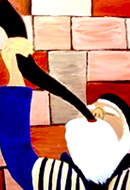 The Shofar
The ShofarFriday, September 14, 2012 by Object Lessons with Alex Joffe | Jewish Ideas Daily » Daily Features
In a new series, archaeologist and Jewish Ideas Daily contributing writer Alex Joffe presents an annotated slideshow of the history and culture of a material object. Here, the shofar.
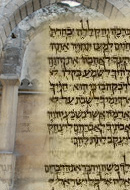 The Aleppo Codex and the Ownership of Tradition
The Aleppo Codex and the Ownership of TraditionWednesday, September 12, 2012 by Alex Joffe | Jewish Ideas Daily » Daily Features
The Torah belongs to all Jews and, indeed, to anyone who cares to learn and live its ways. But it is not transparent.
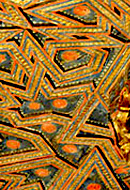 Art against History
Art against HistoryThursday, March 29, 2012 by Alex Joffe | Jewish Ideas Daily » Daily Features
Antiquity washes away the immediacy of historical pain and injustice. Our ability to feel suffering is indexed directly to its epoch: the more remote, the more detached we are. Museums play on this—pander to this—and to our forgetfulness. History is softened, elided, or erased.
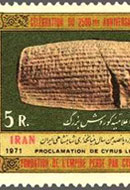 Cyrus, Ahmadinejad, and the Politics of Purim
Cyrus, Ahmadinejad, and the Politics of PurimWednesday, March 7, 2012 by Alex Joffe | Jewish Ideas Daily » Daily Features
At this week's pre-Purim meeting in Washington between President Obama and Prime Minister Netanyahu to discuss Iran's nuclear threat to Israel, Netanyahu gave Obama a present: the book (or m'gilah, scroll) of Esther, which tells how the Jewish heroine foiled Haman's plot to kill the Jews of ancient Persia.
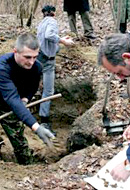 Toward an Archeology of Hell
Toward an Archeology of HellTuesday, February 7, 2012 by Alex Joffe | Jewish Ideas Daily » Daily Features
Remembrance is a contradictory imperative. Respectful preservation of the past, especially the remains of those who have gone before us, stands at odds with the need to understand the same past, especially through means like archeology.
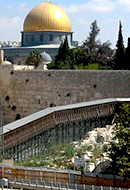 The Mughrabi Bridge to Nowhere
The Mughrabi Bridge to NowhereTuesday, January 3, 2012 by Alex Joffe | Jewish Ideas Daily » Daily Features
From the southern end of the plaza in front of Jerusalem's Western Wall, a temporary wooden bridge ascends eastward to the Mughrabi Gate, the only one of the 11 gates into the Temple Mount area that is accessible to non-Muslims.
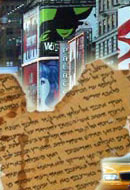 The Dead Sea Scrolls, Alive in Times Square
The Dead Sea Scrolls, Alive in Times SquareTuesday, November 8, 2011 by Alex Joffe | Jewish Ideas Daily » Daily Features
In the basement of a converted theater on West 44th Street, tucked between the legendary Sardi's restaurant and a bowling alley, a block from Times Square and across the street from the musical Memphis, is Discovery Times Square.
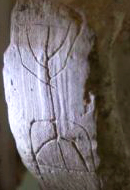 Mysteries of the Menorah
Mysteries of the MenorahThursday, September 8, 2011 by Meir Soloveichik | Jewish Ideas Daily » Daily Features
On the eve of Tisha b'Av, 2011, archeologists revealed artifacts newly unearthed from the great Jewish revolt against Rome (67–70 C.E.), including coins minted by the rebels and a stone incised with a sketch of the Temple menorah. But what is the menorah, and what does it symbolize?
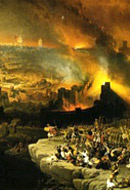 Mourning, Memory, and Art
Mourning, Memory, and ArtMonday, August 8, 2011 by Richard McBee | Jewish Ideas Daily » Daily Features
David Roberts (1796–1864) was a Scottish painter who in the late 1830's traveled extensively in the Levant and Egypt documenting "Orientalist" sites in drawings and watercolors. Among Roberts's paintings was a massive 1849 work, The Destruction of Jerusalem.
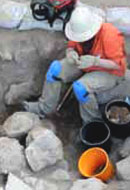 The New Biblical Archeology
The New Biblical ArcheologyMonday, July 25, 2011 by Alex Joffe | Jewish Ideas Daily » Daily Features
Every summer, the Israel Antiquities Authority holds a reception for foreign archeological teams excavating in Israel. This year's reception was attended by over 200 archeologists, who are investigating sites ranging in age from the Paleolithic through Islamic periods.
Editors' Picks
Tomb Raiders Matti Friedman, Times of Israel. With its tunnels dating from the Jewish revolts against Rome, the area around Modi'in has become a magnet for archeologists—not to mention looters searching for buried treasure.
The Birth of Monarchy Bible History Daily. New research on the Qeiyafa Ostracon, the inscription found in Khirbet Qeiyafa in 2008, suggests that it is the first archeological evidence of the coronation of King Saul.
What is the Oldest Known Hebrew Inscription? Biblical Archaeology Society. Four contenders emerge, but the question is not so simple.
What Have the Romans Ever Done for Us? AlphaGalileo Foundation. The discovery of a Hebrew inscription from the fourth century in Portugal is not only the earliest evidence of Jews in Iberia, but also testifies to a close relationship between Jews and Romans.
Witnesses to the Bible? Matti Friedman, Times of Israel. Two rare 3,000-year-old models of ancient shrines are among the artifacts claimed by an Israeli archeologist as evidence for the historical veracity of the Bible.
Caves of Refuge Eli Ashkenazi, Haaretz. A fifth mikveh has been found in the caves on the Galilee's Cliffs of Arbel, indicating that the people who lived there under Roman rule were most likely kohanim, Jews of the priestly class.
The Afghani Genizah Shai Secunda, Talmud Blog. We are starting to hear about the Jewish manuscripts recently discovered in an Afghani cave. But before we learn more, someone has to buy them.
Altarcation Dror Eydar, Israel Hayom. Adam Zertal's sensational discovery of "Joshua's altar" should have created a paradigm shift in archeology—that is, if anyone had believed him.
Found in Israel Avigayil Kadesh, Israel Ministry of Foreign Affairs. Every day, the Israel Antiquities Authority has 30 active archeological digs. Here, a list of the past 25 years' most notable. (With a glaring omission.)
Saved to Disc Matti Friedman, Times of Israel. A rare glass disc depicting the menorah from the Second Temple in gold leaf was kicked around Europe for two thousand years before the Israel Museum gave it a home.

